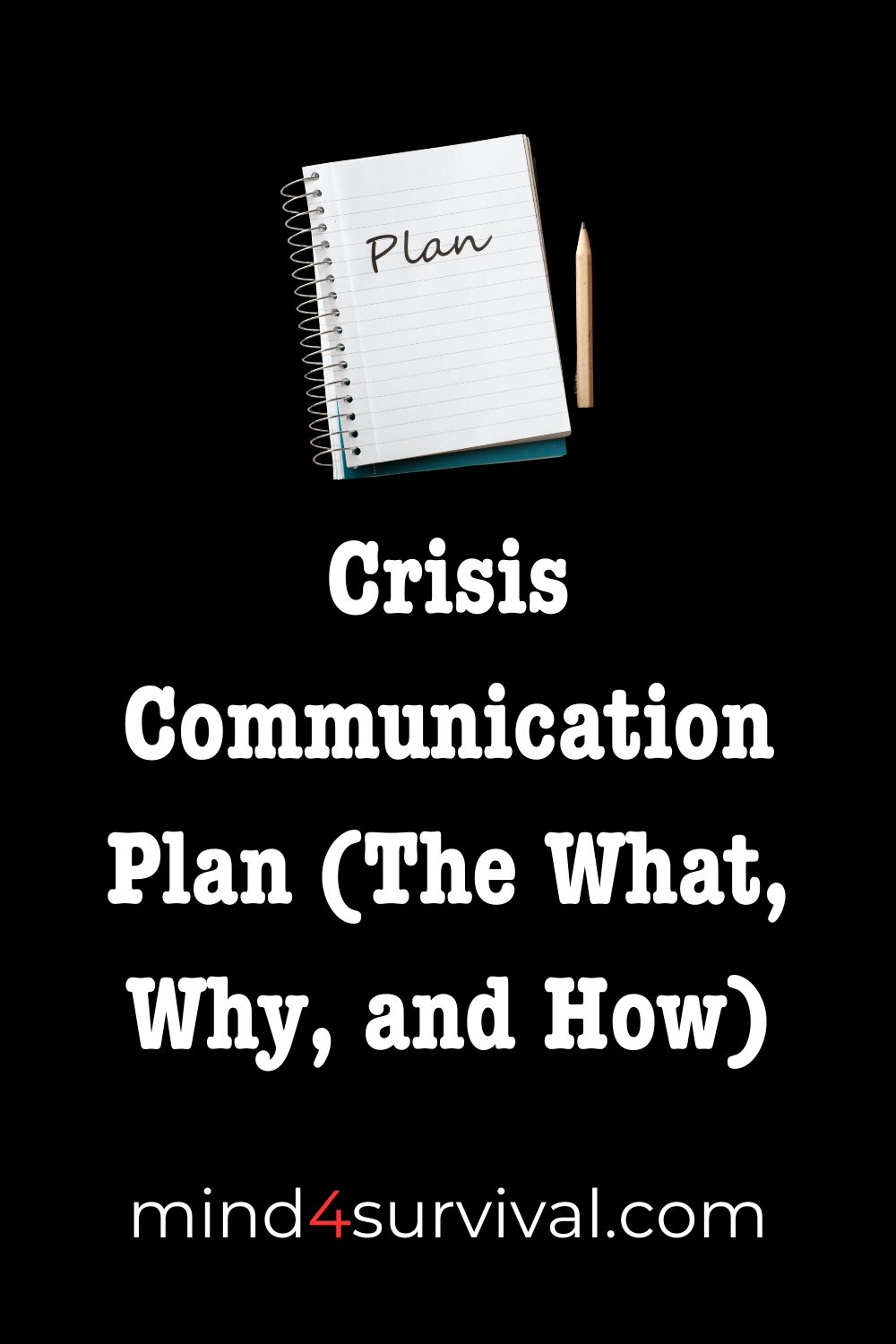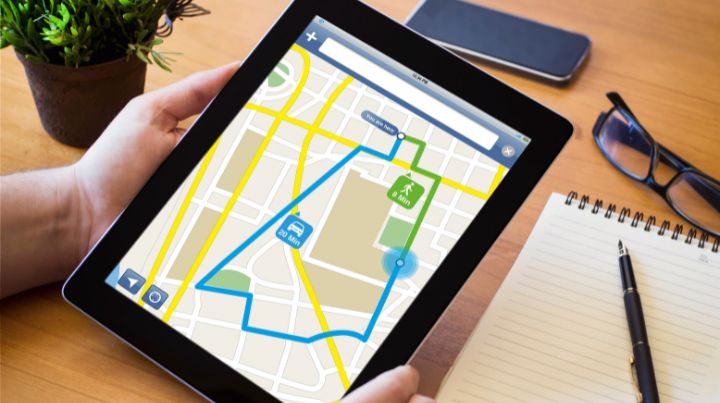Emergencies can happen at any time, and they often strike without warning. Whether it’s a natural disaster, a medical emergency, or a security threat, having a plan in place can make all the difference in keeping you and your loved ones safe. That’s why every household needs a crisis communication plan.
What is a Crisis Communication Plan
A crisis communication plan is a detailed plan that outlines how family members and loved ones will communicate and stay connected during an emergency. It is a comprehensive plan that ensures that everyone knows what to do, who to contact, and where to go in case of an emergency. The plan includes vital information, such as contact details for each family member, emergency services, and other essential contacts.
The plan should be customized to fit each household’s specific needs and circumstances. For example, families living in areas prone to natural disasters may need specific evacuation procedures outlined in the plan. Similarly, families with children may need to include details about contacting the school or daycare center in an emergency.
Having a crisis communication plan in place is essential, but it’s equally important to ensure that everyone understands the plan and knows what to do. It is recommended that families practice the plan regularly to ensure that everyone is familiar with the procedures and can execute them without confusion during an emergency.
In short, a crisis communication plan is a vital component of any household’s emergency preparedness plan. It provides peace of mind, reduces stress during an emergency, and ensures everyone stays safe and connected. A well-crafted plan that is practiced regularly can make all the difference in ensuring the safety and well-being of family members during an emergency.
Who Is A Crisis Communications Plan For?
A crisis communication plan is a vital tool that every household should have in place to prepare for unexpected events, emergencies, and disasters. It’s important to note that emergencies can happen to anyone, anywhere, at any time, and having a plan can help ensure that everyone stays safe and connected during the crisis.
Families with Children
For families with children, a crisis communication plan is even more crucial. It’s essential to have a plan in place for emergencies that can happen during school or extracurricular activities. The plan should include contact information for the school, coaches, and any other caregivers, along with details on how to reach family members.
Families with Elderly Members
Similarly, households with elderly parents or individuals with disabilities should also have a plan in place. These individuals may require special assistance during an emergency, and having a plan can help ensure they receive the necessary support. The plan should include important medical information, such as medication details and emergency contacts.
Single People
Single people who live alone or have roommates should also create a crisis communication plan. In an emergency, they may not have anyone else to rely on, making it even more critical to have a plan in place. The plan should include contact information for neighbors, friends, or family members who can offer assistance in case of an emergency.
Businesses and Organizations
Crisis communication plans are also crucial for organizations and business operations. Crisis communications help businesses and organizations do everything they can to ensure the organization’s longevity, as well as the safety and security of its employees and customers.
Why Is Crisis Communication Important?
A crisis communication plan is vital for several reasons. First, it helps ensure everyone’s safety during an emergency. More specifically, it makes the job of keeping your family safe much easier. By having a communication plan in place, family members know what to do and how to communicate with each other. This can help reduce stress and confusion during a crisis.
Second, a crisis communications plan can help save lives. In an emergency, time is of the essence. Knowing who to contact and how to reach them can help emergency services respond quickly and effectively.
Finally, a crisis communication plan can provide peace of mind. Families can feel more prepared and confident in handling emergencies by having a plan in place.
How to Create a Crisis Communication Plan
Creating, implementing, and taking action with a crisis communications plan involves an easy-to-follow seven-step process.
Step 1: Gather Contact Information
During this step, the planner will gather information about the people, places, and things involved in the plan.
People
The people involved include any family members, friends, and loved ones who will be part of the plan. This also applies to the people who will be supporting your plan. For example, if you plan to have your kids go to Mr. and Mrs. Jones’ house down the street, Mr. and Mrs. Jones are part of your plan. Likewise, if your plan involves going to Aunt Betty’s house in the country—Aunt Betty is part of your plan.
When gathering your “people” information, you will want to consider getting phone numbers, email addresses, physical addresses, and any other specific information that will help during a disaster. For example, if Aunt Betty attends an annual retreat every July, you will want to include that in your crisis communications plan.
That doesn’t mean you can’t go to Aunt Betty’s. It does mean, though, that you need to make plans for when she’s not home. Maybe you get a key from her, or perhaps you pick her up at the retreat site. Either way, planning for all eventualities is part of what you, as the thorough planner that you are or are hoping to become, must do.
Lastly, when it comes to people, it’s a good idea to consider each person’s strengths and weaknesses.
Places
The places of the plan refer to the locations the people in the plan may be at or go to when an emergency happens. This should include several layers of locations that consider the size and type of crisis.
For example, if your emergency is a possible burglar in the home or a fire in the kitchen, you may have a nearby evacuation point at a reliable neighbor’s house. Similarly, should the disaster impact the entire town, your evacuation point, which in the military is called a “rally point,” may be farther away, outside of town.
When considering rally points, be mindful of their ease of access and the security and safety they provide. After all, planning to evacuate to an area that is neither safe nor secure may do nothing more than move you from the frying pan into the fire.
One note to consider when planning your evacuation points is to consider the environment. For example, designating a low-ground evacuation location may not be the best course of action (COA) during a flood. Likewise, evacuating downwind (the direction that the wind is blowing) can put you in harm’s way during a fire, chemical spill, etc.
Things
The things of the plan refer to outside support such as law enforcement, emergency medical services, hotels, roadside assistance information, etc.
Things also include the trip wires that will be used as indicators to implement the plan. Tripwires can be specific events, such as a natural disaster, power outage, civil unrest, or other smaller-scale emergencies that impact the family.
Step 2: Establish Tripwires
When creating a crisis communication plan, tripwires are essential for identifying the specific events or situations that require immediate action and activation of your plan. Tripwries are predetermined thresholds or triggers that help your organization quickly identify when a crisis is imminent or has already occurred.
For example, civil unrest in your area could be a tripwire for activating your crisis communication plan. Another example could be when a tornado warning is issued for your town. The events or situations can vary and should be based on your personal risk assessment and crisis response planning.
Establishing tripwires helps you implement your crisis communication plan quickly and without hesitation. This is critical for responding promptly and avoiding delays that could worsen the situation. It is essential to regularly review and update your tripwires to ensure they remain relevant and effective in mitigating potential crises.
Step 3: Plan for Communicating
The plan for communicating section includes two communication methods: Technological and Physical.
Technological communications involve Data Processing Devices and Radio Frequency Devices and offer four primary forms of communication: Voice, Text, Email, and Social Media. Data Processing Devices include Smartphones, Tablets, Laptops, Smartwatches, and Desktop Computers. Radio Frequency Devices include Walkie-talkies, CB Radios, FRS Radios, GMRS Radios, Ham Radios, Personal Locator Beacons, Satellite Phones, and Feature Phones.
Physical communication includes Direct and Indirect forms of communication channels. Direct communications include methods of communication that require direct, real-time contact with others, such as face-to-face speech and obvert signaling from a distance. Indirect communication methods include leaving messages (overt or covert) that only require the presence of one person at a time.
Step 3: Document the Plan
This step is when the person (persons) responsible for putting the plan together documents the plan in its entirety. When documenting your plan, be sure to do so in such a way that allows for easy reading, understanding, reviewing, and updating.
Step 4: Have a Family Meeting (Brief the Plan)
Once the plan is ready, it should be presented (briefed) to your family, friends, and loved ones who are part of it. The plan should include brief backs that help ensure everyone understands the overall plan, their role in it, and what the others in the plan are doing. When discussing the plan with those involved, feedback should be sought on how to improve the plan—and that feedback should be considered/weighed. Any changes should result in an update to the plan.
Step 5: Rehearse the Plan Using the Crawl-Walk-Run Methodology
When it comes to crisis communication plans, rehearsing the plan using the crawl-walk-run methodology helps ensure success when putting the plan into action. The crawl-walk-run rehearsal method involves breaking down the plan into three stages, starting with a simple and basic walkthrough (crawl), then adding detail and complexity (walk), and finally executing an intense simulation (run).
Crawl
During the crawl stage, participants (the people who will be part of the plan when it’s put into action) brief, review, and walk through the plan along with its steps and procedures. During this phase, everyone learns the basics of their roles and responsibilities.
Brief Backs
It’s essential to conduct brief backs when reviewing the plan. Brief backs are when, in the group setting, each individual is asked to brief their roles and responsibilities to the group as they understand them. Brief backs help ensure everyone understands what they should do when it’s time to take action.
Expect people to get things wrong when reviewing the plan. Don’t beat them up for not understanding the plan or their part in it. This is about building confidence so everyone is as ready as possible to perform under pressure. If they get something wrong, go back through it again. After all, despite how AMAZING you are, maybe you misspoke or failed to cover something when creating/briefing the plan.
Remember, the goal here is to get everyone on the same page regarding how your communications plan will work. As such, one back brief pro tip is to have your crisis communication team members brief you on the roles and responsibilities of other participants. Doing so not only makes sure everyone is super locked-on when it comes to executing your plan, but it also creates redundancy in it as well.
Brief backs are money-makers and can mean the difference between success and failure.
Walk
The walk stage is about mastering the basics by introducing more complexity while fine-tuning all aspects of the plan. During this stage, it is essential to identify where improvements can be made and adjust the plan accordingly. Participants should also be trained on how to handle specific scenarios that may occur during a crisis, such as stepping in for another participant who may not be able to fulfill their role or responsibilities.
Run
Finally, the run stage is the most intense and involves conducting a complete crisis simulation. In this stage, the team is tested to its fullest and must use all the skills and knowledge acquired from the previous steps to manage the crisis effectively. This stage provides invaluable feedback on how the plan may perform in a real-life emergency and what improvements may still be necessary.
By following the crawl-walk-run method, you are doing everything you can to ensure that all the internal and external stakeholders in your crisis communication plan are as proficient as possible in executing the plan. As such, everyone involved will be as prepared as possible to manage any crisis effectively.
In the end, rehearsing the plan regularly and making updates as needed is essential to ensure that your crisis communication plan is always ready to be put into action.
Step 6: Periodic Reviews and Updates
It is not enough to create a plan and forget about it. The plan must be regularly reviewed and updated to remain relevant, effective, and accurate.
A bi-annual review is generally recommended, during which time all information contained within the plan should be reviewed and updated, if necessary, to reflect any changes that have taken place. These changes may include updates to contact information, changes to participants, shifts in priorities, or roles and responsibilities. By conducting periodic reviews and updates, you ensure that your plan remains current and effective in the event of a crisis.
Additionally, it is crucial to ensure that anyone involved in the plan is made aware of any updates made to the plan. Ideally, this will include conducting training sessions to communicate any changes. By doing this, you can be sure that everyone involved is well-informed and capable of executing the plan effectively.
Step 7: Be Ready to Act
This is when the plan must be executed. This stage can be the most nerve-wracking. This is when bad things happen. This is when all the hard work put into developing the plan pays off and can potentially save the lives of your and your loved ones.
Example of Using a Crisis Communications Plan
To help set the mood of this mental exercise, place yourself at the heart of the February 2023 East Palestine, Ohio train derailment disaster when the crisis occurs.
It’s nearly 9 pm on a Friday. You’re home enjoying a relaxing night watching TV and monitoring social media sites when 38 cars of the nearby Norfolk Southern railroad derail and catch fire. As the cars burn, their deadly cargo of methyl-ethyl-kill-a-person releases poisonous hydrogen chloride and phosgene into the atmosphere. The toxic plume of chemicals begins to inundate your town. As a result, you only have a few minutes to figure it out and get your family out of harm’s way.
What do you do?
Being the intelligent, forward-thinking prepper you are, you immediately size up the situation and activate your crisis communication plan.
With a crisis communications plan in place, you know who to contact and where to go. You gather your family members and pets and head to your predetermined evacuation (rally point) outside of town and on the upwind side of the disaster.
Along the way, you use your plan to check in with other family members and ensure everyone is safe.
Along the way, you use your plan to check in with other family members and ensure everyone is safe. Additionally, you hop onto your various social media channels to let others in the area know that they may be in danger too.
Once you reach the meeting place, you use your plan to contact emergency services and let them know your location. You also use your plan to contact other family members who may be out of town or in another part of the city. By following your crisis communications plan, you can stay safe and connected during the emergency.
The Bottom Line on Crisis Communications Plans
Creating a crisis communication plan is vital to ensure your family’s safety and security during an emergency. It’s not enough to come up with a plan; you should also practice it regularly and make updates as needed. Reviewing your plan periodically ensures that everyone involved knows what to do and can make timely decisions during a crisis.
If you follow the steps outlined in this plan, you can develop a comprehensive and effective crisis communication plan that will provide significant peace of mind for you and your family. Remember, being prepared is always better than being caught off guard.
What are your thoughts about crisis communications plans? Have you worked with them before? Tell us in the comments below.
Stay safe,


Read the full article here




